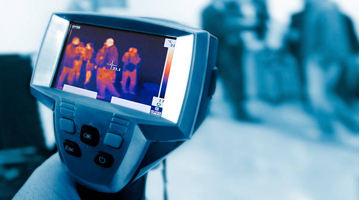Treading the GST Path - VI - Impact on Construction sector
SEPTEMBER 12, 2016
By G Natarajan, Advocate, Swamy Associates
 1.0 THE Construction sector's tryst with Service Tax is an epic by itself. Same is the case with the sector's engagement with Sales Tax / VAT. So, the sector is looking upon GST as a messiah. Will GST prove to be one?
1.0 THE Construction sector's tryst with Service Tax is an epic by itself. Same is the case with the sector's engagement with Sales Tax / VAT. So, the sector is looking upon GST as a messiah. Will GST prove to be one?
2.0 The problems of the construction sector is due to the dual taxing powers simultaneously operating on them, each pitted against the other. To elaborate, after the 42 nd Constitutional amendment, whereby transfer of property in goods during execution of a works contract is deemed as a sale, the State Governments have got the authority to tax such deemed sale. Though the service component of the works contract is in the Centre's taxation domain from the beginning, the Centre sought to harness it only from 2004, by way of levying service tax. The roller coaster ride from then on, came to an end with the decision of the Hon'ble Supreme Court in the case of CCE Vs L & T Ltd - 2015-TIOL-187-SC-ST.
3.0 The following are the major problems of the construction sector with regard to taxation.
- Often there is a overreach by one Government into other's domain, especially in terms of valuing their respective taxing events. The value assessed for the State levy is not accepted by the Centre for exclusion and vice versa.
- The composition schemes under the State levy come with lot of impractical conditions.
- The Central duties paid on inputs become a cost.
- The values fixed by each enactment are not realistic and very often one end up paying taxes on a value more than 100, though the total value of the contract is only 100.
4.0 The basic feature of GST is that it seeks to bid adieu to the concept of division of taxation powers between the Centre and States, so that the instances of one Government encroaching upon the domain of other could be avoided. Both Governments will have concurrent taxing jurisdiction on supplies of goods and services. Hence, the need to identify whether the transaction is one of sale or of service, the much talked about aspects theory, the Dominant nature test, Pith and substance, etc. would all be consigned to legal history. This would mean a lot for the construction sector in terms of avoiding disputes.
5.0 Assuming that the rates of CGST and SGST would be equal, there would be no allegations of offloading the values from highly taxed domain to less taxed domain.
6.0 At present, the Central duties (Excise duty, etc.) paid on inputs used for construction is not allowed as cenvat credit for the Works Contractor, inasmuch as there is no Central levy on transfer of property in such goods. Only the State levies (VAT, etc.) can be allowed as Input tax credit. This leads to cost escalation.
6.1 Under the GST regime, as per Schedule II to the model Act, "works contracts" including the incidental transfer of property in goods therein is treated as a supply of service. Such supply of service would be liable to both CGST / SGST - if it is an intra State Supply, and IGST - if it is an inter State supply. Thus the CGST / SGST / IGST paid on various inputs and input services used for the supply of works contract service should be allowed as Input Tax Credit without any restriction. If at all, only the present restriction of not allowing any cenvat credit / input tax credit pertaining to the duties and taxes paid on construction related activities, to the end users, may continue under GST regime, if the present policy in this regard is sought to be continued. Hence, there is every reason to believe that all the GST paid on inward supplies of goods and services would be entitled for Input Tax Credit for a Works Contract Service Provider.
Before parting:
The various restrictions on availing cenvat credit, contained in Section 16 (9) of the model Act is rather confusingly worded, which eludes clarity and this aspect has already been highlighted in the first article under this series - Treading the GST Path - I - A "Principal" mismatch.
Also See : Treading the GST Path- V - Transitional Credit - Explained
Treading the GST Path-IV - Transitional Credit - Explained
Treading the GST Path-III - Certain snippets on ITC
Treading the GST Path - II - ISD - Decodifed
Treading the GST Path-I - A 'Principal' mismatch?
|
(DISCLAIMER : The views expressed are strictly of the author and Taxindiaonline.com doesn't necessarily subscribe to the same. Taxindiaonline.com Pvt. Ltd. is not responsible or liable for any loss or damage caused to anyone due to any interpretation, error, omission in the articles being hosted on the site)
|









 1.0 THE Construction sector's tryst with Service Tax is an epic by itself. Same is the case with the sector's engagement with Sales Tax / VAT. So, the sector is looking upon GST as a messiah. Will GST prove to be one?
1.0 THE Construction sector's tryst with Service Tax is an epic by itself. Same is the case with the sector's engagement with Sales Tax / VAT. So, the sector is looking upon GST as a messiah. Will GST prove to be one?



